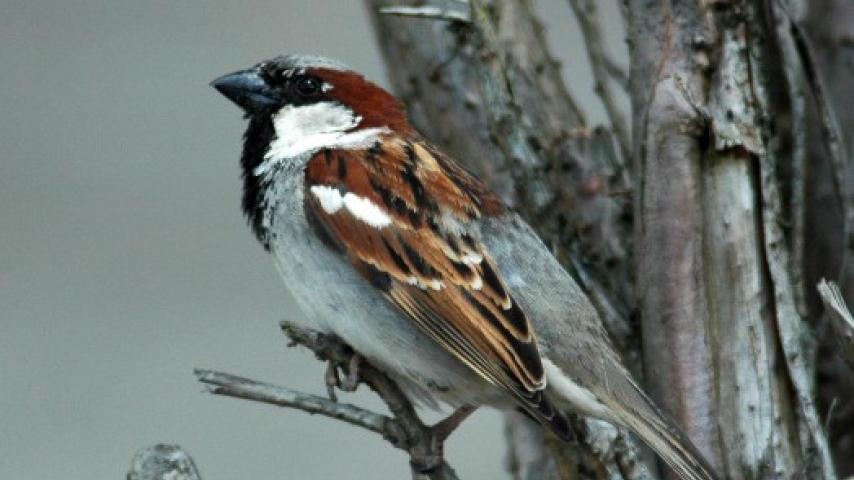House Sparrow (Passer domesticus)
House Sparrows are small (total length 14 cm) birds with striped brown backs and plain gray underparts.

KINGDOM Animalia - PHYLUM Chordata - CLASS Aves - ORDER Passeriformes - FAMILY Passeridae
The male is quite attractive, with a gray crown, chestnut head patch, white cheeks and black bib. Researchers have found that females are more attracted to males with larger bibs. The female has a light brown crown with a tan eyestripe.
Like the starling, this is another non-native bird in North America. Introduced in New York City at about the same time, it spread west with the railroads and fed on seeds that passed through the digestive tracts of horses, abundant in those days. In addition, the sparrow has been introduced from its original Eurasian range to almost all parts of the world, temperate and tropical.
The conical bill of the House Sparrow is shaped much like that of other seed-eating birds the world over. The high base gives the bill a mechanical advantage in cracking small seeds, the primary food of this species. With the prevalence of weedy herbaceous plants, including grasses, in the disturbed habitats that support it, the sparrow has no trouble finding enough seeds for sustenance, and added to that is the abundance of small seeds at bird feeders everywhere people live. During the nesting season, with hungry young to be fed, sparrows also take many insects, even catching them in flight.
The song of male House Sparrows consists of repeated notes that sound much like “chirp,” the origin of that word commonly used to describe a bird call. During the breeding season, a male droops his wings, elevates his tail, and dances around in front of a female to get her attention. The only territory maintained is right around the nest, with males and females attacking only individuals of their own sex.
House Sparrows are monogamous, the pair bond maintained through the breeding season, which may be lengthy and consist of multiple broods, even up to four. Nesting is usually in cavities, of which there are many in its urban and rural habitats. In some areas where cavities are not at available, the sparrows build bulky globular nests with side entrances among tree branches, Like starlings, House Sparrows may displace other species from their cavity nests.
An average clutch consists of about five eggs, and with several broods per season, the success of this species in colonizing much of the world is easily understood. The eggs are incubated for about 11 days, and the young fledge at about 14 days. The female then begins another cycle of egg-laying.